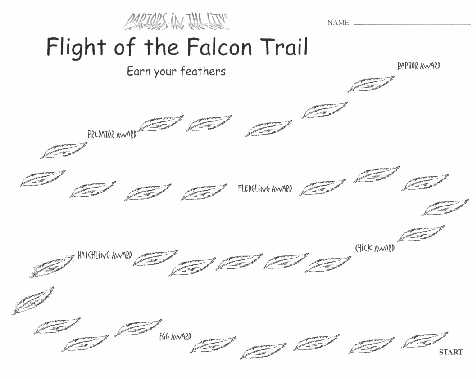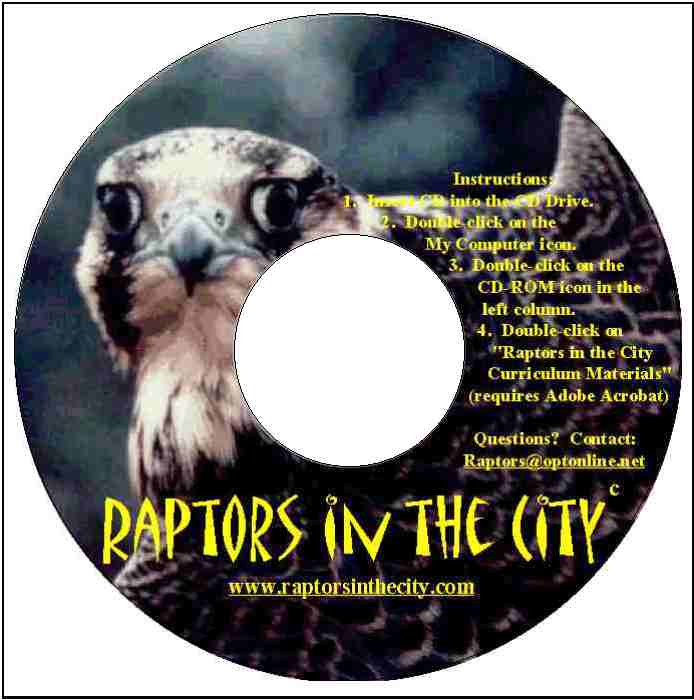
 | ||||

Click here to order
or to request more information
Click here to read a news release
Raptors in the City is an inquiry-based science, internet and print research curriculum for ages 7-11, with adaptations for older grades
For classroom, library, afterschool, homeschool and mentoring programs
Supports one semester of study
Serious science that's fun!
Easy to administer - no software to install or learn
Celebrates saving species!
Objectives for Students:
National Science Education Content Standards: Student standards A, C, E, F, G
National Educational Technology Standards (NETS): Technology Profile Performance Indicators (1), (2), (4), (5), (6), (7),(10)
--- To study the characteristics and life cycle of the peregrine falcon in the
--- To develop the skills of scientific inquiry and observation
--- To develop an understanding of adaptation to environmental changes
within the peregrine falcon population
--- To appreciate the role that science and technology have played in the
--- To organize resource data
--- To use telecommunications and online resources to access remote
information and to communicate with others in support of direct and
independent learning
--- To evaluate the accuracy or bias of electronic information sources
Procedure:
--- Each student will receive a "Flight of the Falcon Trail" sheet, to document
--- Each student will compile a personal bibliography, using standard
--- Each student will keep a falcon journal as he or she follows the nesting
show the hatching and growth of chicks each spring)
Assessment:
--- Each child or group will create a print and internet source bibliography
and will support the authority of the chosen sources
--- Each child or group will keep a daily falcon journal of observations of
--- Children will produce drawings illustrating life cycle stages and falcon
--- Children will both answer and create further questions about adaptations
to environmental change in the peregrine population
--- Tests and other materials will be provided for periodic assessment
Materials:
--- The "Raptors in the City" package (available in print or CD-ROM versions),
e-newsletter with commentary by a peregrine nest monitor for the Ohio
Department of Wildlife and other experts, and a copy of the resource book,
"The Peregrine Falcon - Endangered No More"
--- Classroom, library or home access to the internet
Timeframe: to coincide with nesting season, roughly late February or March through June, although background research may begin earlier. Class time may be tailored according to depth of study desired.
Click here to see samples
 | ||||||

 | ||||
Curriculum materials
print version or CD
$50 per classroom
Science and Technology Curriculum Materials Package
Grades 4-6
Assignments and award certificates

 | ||||

 | ||||

 | ||||

Resource Text
"Highly Recommended"
"Best Science Books for Children"
selection
Science Books and Film
The American Association for the Advancement of Science
 | ||||
Subscription to the "Falcon Flash" e-newsletter
Expert commentary about peregrine falcon nesting behavior as seen live online via cameras mounted on skyscrapers
 | ||||


Raptors in the City Mentor's Materials Kit
available in print form or via downloadable PDF
and includes activities and research topics for months of falcon webquesting and research fun.
$10.00

 | ||||
